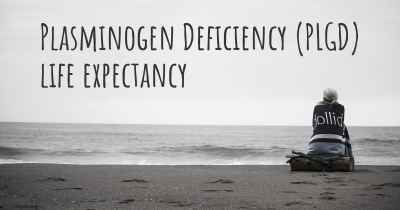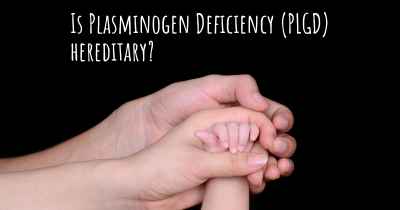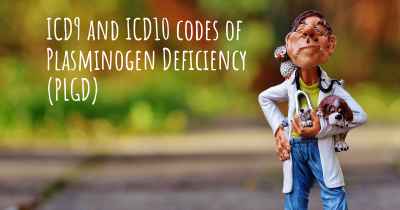Which are the causes of Plasminogen Deficiency (PLGD)?
See some of the causes of Plasminogen Deficiency (PLGD) according to people who have experience in Plasminogen Deficiency (PLGD)

Plasminogen Deficiency (PLGD) is a rare genetic disorder characterized by the insufficient production or dysfunction of plasminogen, a protein involved in the breakdown of blood clots. This condition can lead to a variety of health complications, including impaired wound healing, abnormal scarring, and an increased risk of developing blood clots.
There are several causes of Plasminogen Deficiency:
- Genetic Mutations: PLGD is primarily caused by mutations in the PLG gene, which provides instructions for producing plasminogen. These mutations can result in reduced or non-functional plasminogen, leading to the deficiency.
- Autosomal Recessive Inheritance: PLGD is inherited in an autosomal recessive manner, meaning that an affected individual must inherit two copies of the mutated gene (one from each parent) to develop the condition. If both parents carry a single copy of the mutated gene, they have a 25% chance of having an affected child with PLGD.
- Spontaneous Mutations: In some cases, PLGD can occur due to spontaneous mutations in the PLG gene, without a family history of the condition. These de novo mutations can arise during the formation of reproductive cells or early embryonic development.
- Acquired Plasminogen Deficiency: While rare, PLGD can also be acquired later in life due to certain medical conditions or medications. Acquired PLGD can be caused by liver disease, kidney disease, certain cancers, or the use of certain drugs, such as tranexamic acid or aminocaproic acid.
It is important to note that PLGD is a rare disorder, and the exact prevalence is not well-established. The severity of the condition can vary among affected individuals, with some experiencing mild symptoms while others may have more severe complications.
Diagnosis of PLGD typically involves a combination of clinical evaluation, genetic testing, and laboratory analysis to measure plasminogen levels and activity. Early diagnosis is crucial to initiate appropriate management strategies and prevent potential complications.
Treatment for PLGD aims to address the underlying deficiency and manage associated complications. Therapeutic options may include plasminogen replacement therapy, which involves administering purified plasminogen to increase its levels in the body. Additionally, supportive measures such as wound care, anticoagulant therapy, and genetic counseling may be recommended.
In conclusion, Plasminogen Deficiency is primarily caused by genetic mutations in the PLG gene, leading to reduced or dysfunctional plasminogen. It can be inherited in an autosomal recessive manner or occur spontaneously due to de novo mutations. Acquired PLGD can also develop later in life due to certain medical conditions or medications. Early diagnosis and appropriate management are essential to mitigate the potential complications associated with PLGD.
While both parents of a child with congenital PLGD carry a copy of the affected gene, they typically do not show signs and symptoms of the disorder. This is why parents are understandably surprised to find out that their child has this rare condition, especially if there is no history of PLGD in their family.
Patients with congenital PLGD may have abnormally low, or almost no, PLG present in the blood. Others may produce some PLG, but a significant portion of it is not active or not performing normally. People with moderate levels of PLG (levels are slightly below normal) may not experience symptoms at all.
Posted Aug 9, 2017 by jodoinjulie 2000








